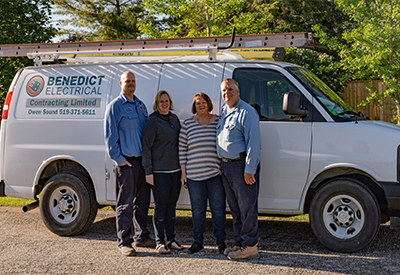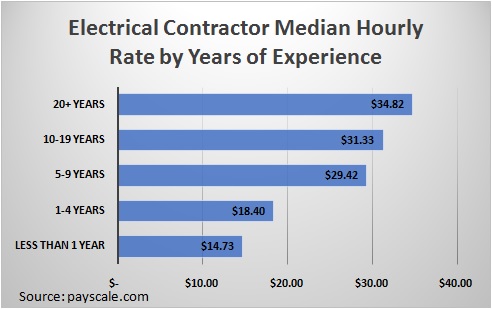Worthwhile Things Are Hard to Do

January 31, 2022
By Keith Sones
I was about 12 years old when I did the most physically demanding thing of my life. As in my whole life, to this day. That was 45 years ago and nothing I’ve done since was more difficult. I’ve run up mountains, competed in triathlons and run ultramarathons, so I consider the bar to be relatively high.
It had been a lengthy dry spell on my uncle’s farm where I was working that summer. Rain hadn’t fallen for a few weeks and the crops, adjacent forest and the ground itself were parched. I’d been tasked with doing regular farm work such as cutting fence posts out of red willow, driving the small Ford tractor endlessly in circles as it pulled a hay rake and helping in whatever ways I could.
I was eating lunch one afternoon in the small farmhouse when my uncle told me to get a shovel and head to one of the near fields. Puzzled, I asked what I’d be doing. He looked at me and said two words, a grim look on his face. “Peat fire” he said solemnly.
The words meant nothing to me “What’s a peat fire?” I asked innocently.
“There’s a fire underground. You need to dig a trench around it so it can’t spread”, he replied.
‘A fire underground?’ I thought. I pictured a cavern or hole in the soil with a pile of wood that had somehow ignited, flames dancing, and I would have to dig a hole around…what? I was at a loss.
My uncle saw the confusion on my face. “You’ll see it” he said. “It smoulders, doesn’t move very fast at all. Not like a regular fire. Just dig a trench around it, down to the dirt, all the way down. Like a ditch so it can’t spread”. He left the room, off to tend to other chores.
Still uncertain about what I’d find or what to do, I finished eating then headed out the door, grabbing the long handled spade that was propped up against the house. Shovel in hand, I trekked along the rutted dirt road that lead to the field in question.
The image in my mind still told me that I’d find a fire, something with flames. The reality was much different. Passing through the grove of poplar and spruce, the view opened up to the field. There was no fire in sight.
But there was smoke. Little wisps of it here and there, some seeming fairly intense whereas others were small, drifting lazily in the late summer air. There was no clear perimeter, no outline of where the “fire” started and ended. I had no idea how this this fire started. Does it happen automatically? Lightening perhaps, although that seemed a bit of a stretch even to 12 year old me. In any event, the cause didn’t matter.
‘Where was I supposed to start digging?’ I asked myself. ‘Should I dig down where the smoke was thickest and dig up whatever was burning, this “peat” stuff and bash it with the shovel until the fire went out like I would a campfire? Or is it better to dig away from the smoke and dig a big circle around it? That seemed like a better idea. I quickly gauged how big a circle it would take to corral the fire, picked my starting point and used my boot drive the shovel into the ground.
Or tried to.
Peat is an organic mixture of plant matter and soil that is created over a long period of time and under unique conditions. I won’t bore you with the science but suffice it to say that the decayed plant matter allows it to burn when dry. In earlier times, before natural gas and wood stoves, it was a popular (because it was available and wood often wasn’t) source of fuel for cooking. It’s also a bit spongy and loose, not densely packed. So you’d think it would be easy to dig up.
Think again. That first attempt was like driving the shovel into a large unbreakable water balloon or small trampoline. It just kind of bounced back, more so etching the ground than excavating it. Disappointed, I looked around at the rising smoke. Was there more of it than there was a few minutes ago? I couldn’t tell. I did, however, know that I’d made zero progress. I looked at the ground and pressed the spade in once again. It went a bit deeper.
After a few minutes I learned how to tell when I’d gotten to the bottom of the peat, the ground turning harder, not as soft. Rocks were a telltale sign I’d gone far enough. I continued to dig my small ditch, one shovel full at a time. I hit a rhythm and actually started feeling a bit of pride as I moved along the soft field. But in an instant whatever smile I had on my face was washed away and I was filled with dread.
I saw smoke rising behind me.
The ditch was going in the wrong direction. I hadn’t made the circle big enough. Disheartened, I rested for a minute. I’d been working for an hour, working hard, and had nothing to show for it except a small trench that went THROUGH the fire zone, not around it. I wasn’t allowed to give up. My uncle wasn’t exactly the type to give participation ribbons. When a job had to be done, it got done.
I continued digging, feeling sorry for myself. Why me? Why isn’t he out here helping? Or someone else. This is hard. I’ll never finish. And so went the chorus. But while my mind made excuses and cried mental tears of sorrow, my body was on autopilot. Into the ground, lift the sod, a few more loads to get deep enough. Repeat.
I kept it up for several hours. In addition to the physical demands, it was messy work. A person can walk on burning peat; it’s not like stepping into a fireplace where you risk being burned. But each footstep releases a small bit of ash from the smouldering material, rising up almost invisibly and coating everything with a film of black. My clothes, skin, eyes and lungs – all were glazed with soot. But I kept going.
By the time dusk came, I was exhausted beyond anything I’d ever felt before and in all honesty, since. When it got dark enough that I couldn’t see the smoke rise it was pointless to carry on blindly into the night. My trench wasn’t done but there was little I could do. Dragging the shovel behind me, I trudged back to the farmhouse, headed straight to the concrete basement and dropped onto the small mattress, filthy and verging on unconsciousness.
I woke up the next morning still in a daze. Blinking my eyes open, it took me a few minutes to remember where I was and why I was laying on the bed so dirty and sore. The realization of the task that lay ahead, namely finishing off the ditch, depressed me. But I knew there were no other options, so slowly I got to my feet and plodded up the stairs.
My uncle was at the breakfast table, his day well underway. I sat down, waiting for admonishment for not fully circling the fire. I said nothing.
“Rained” he said without inflection. “Fence posts today” as he stood up.
The meaning was clear, and I was thrilled. The skies had opened up enough for the fire to subside, at least to my uncle’s satisfaction. I actually looked forward to the gruelling chore of cutting down red willow trees, dragging them out of the bush and cutting them into fence posts. I was relieved.
Worthwhile things are hard to do. Had the combination of my labour and Mother Nature’s drizzle not put the fire out, it may well have spread far and wide, damaging the soil for a long time. It was bloody hard, but necessary. Had the showers not shown up, I’d have been out in that field again, digging in those hard conditions until the job was done.
As a result of global policy and a desire to stem climate change, we are tasked as a society with electrifying the world. To put this in context, this is what we need to do. I’m going to offer up some rough math here and if I got it wrong I’ll apologize in advance. But it’s probably close. By the way, don’t glaze over from the techie stuff and numbers below. I’ll be brief.
In 2019, the world used about 26,000 terawatt hours of electricity of which close to 64% was created using fossil fuels. To replace that load and achieve net zero emissions by 2050 (the Canadian government is pushing for 2035), the plan to which many countries have committed, that needs to be replaced. To get rid of that source of generation, the world (that’s us) needs to add approximately 190 megawatts (MW) of generation every day for the next 28 years. That’s enough new clean energy to serve 36,000 homes added to the mix EVERY SINGLE DAY. A good sized wind farm creates 200-300 MW, to give some scale. Or we could add a new 1,000 MW nuclear plant every five days. For 28 years.
But there’s more. That’s just to replace what we used a few years ago. In addition we need to add far more to allow for electric vehicles, building conversions, electric ships, planes, and everything else that will be powered up with electrons. I haven’t done the math on that one but it’s bound to be a lot. And for solar and wind sources, they often need a firm power backup, so add that to the list.
And one rather large footnote to all of this. Our current electrical grids are old and were never designed for this kind of huge load increase. We will need new technology and plenty of new transmission lines to connect the renewable energy to the end users.
Will new technology allow all of this to happen easier? Maybe, and even hopefully. Should we sit back and wait for the magic to be revealed? Probably not the best idea.
The transformation could be huge. But nothing good comes easy. Oh, you thought this stuff might just happen, without a lot of effort. That’s one dream that won’t come true.
So everyone. Shovels out. Get to work.
















